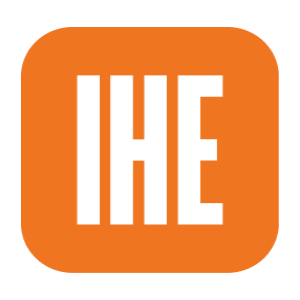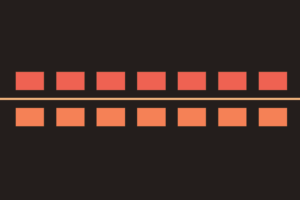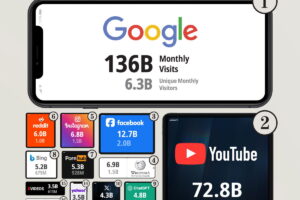
3 Questions for Coursera’s Tom Fail
Tom Fail and I work together on my institution’s Coursera portfolio, with Tom serving as our main point of contact. So far, I’ve enjoyed this collaboration, as Tom has been an effective and energetic partner. Tom not only works for Coursera, but he was also a consumer of university/Coursera partnerships as an online M.B.A. student (and now graduate) from the Gies College of Business at the University of Illinois. As I’m always interested in colleagues who combine full-time work and full-time learning, I was excited to engage Tom in a conversation about his career and education.

Q: Tell us about your role at Coursera. What are your primary accountabilities and responsibilities? What does a typical day look like?
A: As a strategic account manager at Coursera, I’m passionate about improving access to affordable, high-quality education from leading universities and industry partners. I’ve been with Coursera for nearly four years, initially as a technical account manager, where I focused on platform functionality and project success. Over time, I’ve had the opportunity to expand my scope both with the volume of partners as well as building strong partnerships focused on aligning their goals with Coursera’s mission to expand global learning opportunities.
On a typical day, I’m collaborating with university and industry leaders and internal teams to design, scale and optimize online programs. Some days I’m pitching new features or program designs to partners; other days I’m focused on marketing strategies and learner life-cycle experiments that drive engagement and retention. I’m also listening to our partners for opportunities, big and small, to improve workflows both for staff and students that allow our strategy to scale and work in reality. I love getting into the weeds to understand exactly how something works and coming up with solutions that can be adopted to improve outcomes.
I’m accountable to my partners to help them get the most out of Coursera; internal stakeholders rely on me to ensure we’re driving key priorities, features and work streams with our partners. And, of course, my first priority is the learner. Everything we do is about making sure learners can gain access to the skills they need to advance their careers and thrive in a rapidly changing world. Ultimately, success means creating programs that deliver real value, are accessible at scale and help drive better outcomes for learners everywhere.
Q: How did the process of working towards your iMBA influence how you think about Coursera’s role in working with universities on online degrees? What should universities be doing to make graduate degrees more accessible, feasible and high value for full-time working adults?
A: The most helpful part of earning my M.B.A. while working at Coursera has been understanding our platform from the learner perspective and what really differentiates content on our platform. Since I started at Coursera, I’ve completed my M.B.A., as well as professional certificates in data analytics and project management and Specializations in business strategy and data visualization. I always have fresh strategies and love getting to demo features from the lens of my own student account to give partners a real-world view of our learner experience and the outcomes they can drive with course design.
When it comes to any offerings on the platform, flexibility and accessibility are absolutely critical. Not all working adults have the means, or the desire, to leave their jobs and return to school full-time. I have a ton of respect for anyone who does, but that wasn’t the path for me. The iMBA gave me the opportunity to earn my degree over two years while continuing to work, and that flexibility made all the difference. It wasn’t easy, but the program’s design and curriculum kept me engaged and excited.
Every single class had a direct connection to my day-to-day work at Coursera, which kept me going forward and learning within the program. When I got my first master’s in management and leadership back in 2012, I didn’t have the professional context to apply what I was learning, so this was really meaningful, and I’m proud of completing the degree.
For universities, the key is designing programs that allow learners to learn on their own terms and start programs more like a consumer purchase. Having stackable content available in open courses that can be applied towards the degree allows learners to try the content and gain confidence in the program and themselves before they fully commit to a full program. Also, performance-based admissions pathways offer learners the opportunity to earn their way into degrees regardless of their background. Some people want live sessions; others prefer fully asynchronous options. Some enjoy group work; others need flexibility to work independently. There’s no one-size-fits-all model, and that’s where universities can differentiate themselves—by striking a healthy balance between structure and flexibility, best practices and personalization. Ultimately, accessibility, flexibility and relevance are what make these programs high value for working professionals.
Looking forward, a critical element for universities is the evolution of content. Two to three years ago, AI was barely part of the conversation; now every instructional design team and faculty member is grappling with its implications, from academic integrity to assessing skills in a new economy. You can’t “set it and forget it” with your curriculum and courses anymore. Learners have endless options, and that competition will only intensify. The partners that stand out will be the ones that prioritize continuous improvement: integrating learner feedback, refreshing content to stay aligned with industry trends and delivering programs that feel robust, relevant and career-focused.
Q: Reflecting on your career and educational path, what advice do you have for early and midcareer professionals interested in building a career at the intersection of technology and education?
A: When I started in undergrad at East Stroudsburg University, I wanted to be a high school social studies teacher. I hit a turning point when I realized all high school students—myself included—can be a handful, so I pivoted into economics and history. My adviser, Dr. Christopher Brooks, and my first boss, hall director and now friend Patrick Monoghan, helped me beyond words to figure out where I excelled and pushed me to shape my career. At ESU, I had so many incredible people invest time and energy into me, and I especially love my career in ed tech because I can help other students gain access to technology and education that helps them figure out their path.
As I think about my early career at EAB, I had the opportunity to work with almost 100 schools deploying student success technology to help identify at-risk students and get them the help and resources they need. You learn a lot as a 24-year-old explaining to provosts and CTOs how the system works, what the road map is and what you did to mitigate after a self-inflicted data error occurs. Coursera has taken that even further, as I get the opportunity to work with some of the most prestigious universities and companies in the world to improve education and build programs that can improve people’s careers and lives, the way education improved mine.
For anyone looking to build a career in education, I’d say this: You can work in any industry—telecom, banking, pharmaceuticals, whatever—but education offers a unique chance to make a meaningful difference. It’s not lip service to say that education lifts people up and improves lives, and being part of a team focused on making learning more accessible, scalable and affordable worldwide is incredible.
Source link



